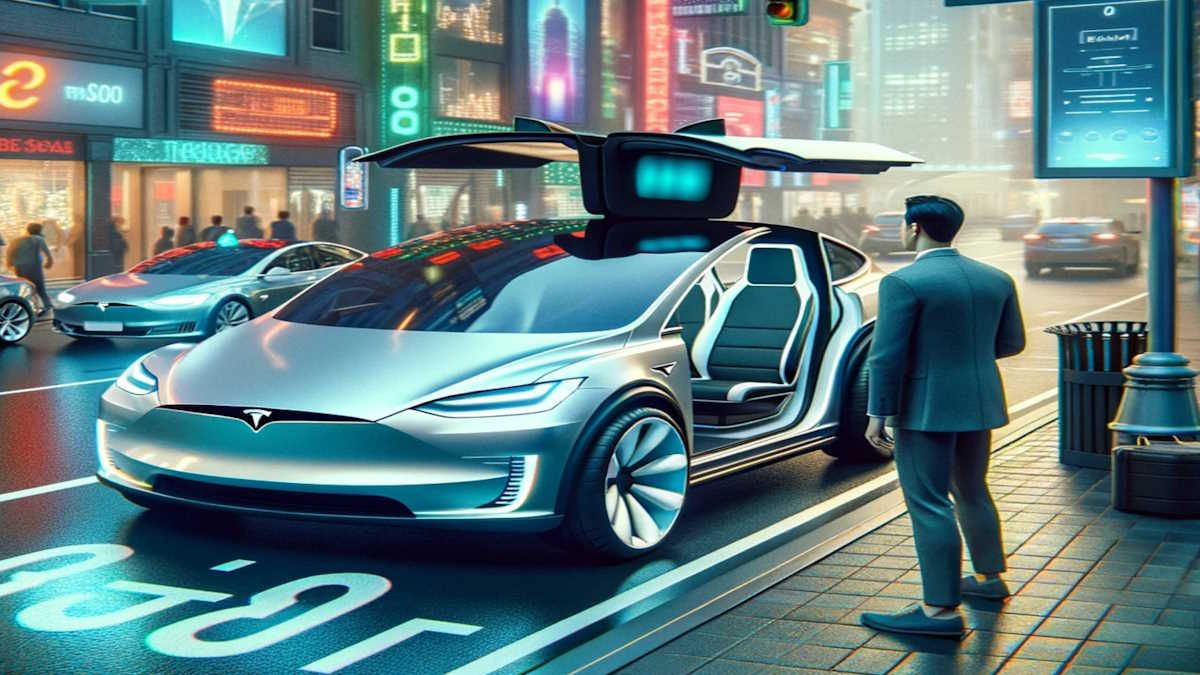In the rapidly evolving landscape of urban mobility, a silent revolution is brewing—one that could redefine the very fabric of ride-hailing services as we know them.
At the heart of this transformation are driverless Tesla vehicles, poised to disrupt the traditional ride-hailing ecosystem dominated by giants like Uber. With a blend of cutting-edge technology and visionary foresight, Tesla's autonomous vehicles are not just promising a new mode of transportation; they are envisioning a future where ride-hailing is safer, more efficient, and environmentally friendly.
Uber and Lyft will eventually be disrupted by this change in transportation - unless they adapt and buy Tesla vehicles as fleet operators.
The Dawn of the Autonomous Era
Tesla's foray into driverless technology with its Full Self-Driving (FSD) system is the cornerstone of this new era. Equipped with advanced sensors, cameras, and artificial intelligence, these vehicles are designed to navigate the complexities of urban streets with precision and finesse, sans a human driver.
The idea is simple yet revolutionary: a fleet of Teslas, available at a tap on your smartphone, ready to whisk you away to your destination, all while you sit back and enjoy the ride or catch up on work.
There are numerous videos showing Tesla's latest version of FSD, version 12, doing intervention free rides and making smart decisions while driving.
A Shift in the Ride-Hailing Paradigm
The introduction of driverless Teslas into the ride-hailing market promises a seismic shift in how services are delivered and experienced.
For starters, the elimination of the driver from the equation could lead to a significant reduction in operational costs. Without the need to share fares with human drivers, these savings could be passed on to consumers, making rides more affordable.
Moreover, the round-the-clock availability of autonomous vehicles would increase the efficiency and reliability of ride-hailing services. Gone are the days of surge pricing during peak hours or the struggle to find a ride late at night. Tesla's autonomous fleet would be on the move 24/7, ensuring that a ride is always just a few minutes away.
You May Also Be Interested In: A Billion Tesla Humanoid Robots In the 2040s, Says Elon Musk
Safety and Sustainability: The Twin Pillars
Safety is another domain where driverless Teslas could outshine their human-driven counterparts. By eliminating human error, which accounts for a significant percentage of road accidents, autonomous Teslas could offer a safer travel alternative.
Coupled with Tesla's commitment to sustainability through electric vehicles, this model also aligns with the growing demand for eco-friendly transportation options, further enhancing its appeal.
The Roadblocks Ahead
However, the road to autonomy is not without its bumps. Regulatory hurdles, ethical considerations surrounding AI decision-making, and the technological challenges of ensuring foolproof safety in unpredictable driving conditions are significant barriers.
Additionally, the displacement of human drivers raises socio-economic concerns that need addressing, including the impact on employment for millions who rely on driving jobs for their livelihood.
A New Ecosystem of Opportunities
Despite these challenges, the potential of driverless Teslas extends beyond just displacing traditional ride-hailing services. They herald the creation of a new ecosystem of mobility services, from last-mile deliveries to on-demand shuttles, all operated by a fleet of silent, efficient, and clean vehicles.
Moreover, the data generated by these autonomous journeys could provide invaluable insights into urban mobility patterns, contributing to smarter city planning and infrastructure development.
The Uber Conundrum
For Uber and similar services, the advent of driverless Teslas presents both a challenge and an opportunity. The competition will undoubtedly intensify, but it could also spur innovation and partnerships that leverage autonomous technology to enhance their offerings.
The future might see a hybrid model where human-driven and autonomous vehicles coexist, catering to a broad spectrum of consumer preferences and needs.
Final Thoughts
As we stand on the cusp of this autonomous revolution, one thing is clear: the journey ahead for driverless Teslas and the ride-hailing industry is as much about navigating technological and regulatory landscapes as it is about reimagining the essence of urban mobility.
In this new era, the destination is not just a physical place but a vision of the future where technology, sustainability, and safety converge to redefine the way we move through our cities.
In Other Tesla News: Getting Launched In An Original Tesla Roadster - The Moment That Changed Everything For Me About Tesla
What do you think about driverless Tesla's disrupting Uber and Lyft? Is this going to happen, or will Uber and Lyft adapt?
Share this article with friends and family and on social media - or leave a comment below. You can view my most recent articles here for further reading. I am also on X/Twitter where I post more than just articles daily, as well as LinkedIn!. Thank you so much for your support!
Tesla FSD and Ride Hailing Pricing - People Are Going to Flock to Buy Tesla's Compact Car For Autonomous Use
Understanding the eventual pricing of Tesla's FSD and ride hailing requires a different approach than the take rate for FSD today. @WholeMarsBlog clues us in on how Tesla… pic.twitter.com/XSJnyVJuKG
— Jeremy Noel Johnson (@AGuyOnlineHere) February 8, 2024
Hi! I'm Jeremy Noel Johnson, and I am a Tesla investor and supporter and own a 2022 Model 3 RWD EV and I don't have range anxiety :). I enjoy bringing you breaking Tesla news as well as anything about Tesla or other EV companies I can find, like Aptera. Other interests of mine are AI, Tesla Energy and the Tesla Bot! You can follow me on X.COM or LinkedIn to stay in touch and follow my Tesla and EV news coverage.
Image Credit: DALL-E AI





